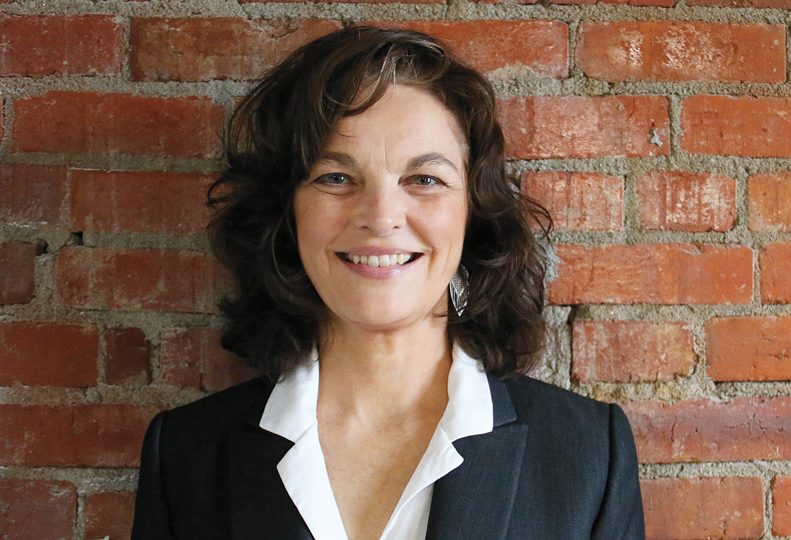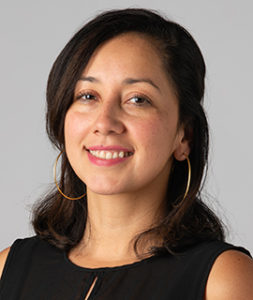
Home » Q&A with Maplewood Software's Nancy Janzen
Q&A with Maplewood Software's Nancy Janzen
~

November 18, 2021
Nancy Janzen currently serves as the CEO and vice president of operations at Spokane-based Maplewood Software Inc., which focuses on developing and delivering cloud-based products for the health care industry. Janzen co-founded Maplewood Software with her husband, John Janzen, in 1996, although she didn’t officially join the company until 2001.
Janzen has a background in education and taught at the high school and elementary school levels on Washington’s West Side before she and John decided to move back to Spokane in the mid-’90s, so that their two kids could be raised around family, and they could have a better work-life balance.
From 2002 to 2006, Maplewood developed and delivered ScheduleRX, one of the first web-based staff scheduling software applications specific to the pharmacy market. In 2006, Pharmacy OneSource acquired the rights to the application.
In 2010, Maplewood Software stopped doing consulting work and began focusing solely on developing applications, such as StaffReady, which is a clinical workforce management software suite delivered in the cloud. StaffReady also was designed to assist busy health care professionals facing complex demands and regulatory pressures with too few resources.
The Journal recently sat down with Janzen to discuss Maplewood’s endeavors and her role over the years.
What made you leave your education career for Maplewood Software?
Being here. We had two kids by the time we were 30 and living in the West Side. We realized we wanted them to grow up around their families and friends, so we moved back to Spokane.
What we realized with the lack of opportunities here, we either needed to start a company or move back to the West Side. John had always wanted to design software, so we founded the company in 1996, and went full time in 1999. I didn’t get involved until 2001.
I’ve really enjoyed it. I wouldn’t change it.
I’ve had a lot of people ask me, had you known you were going to go into business, would you have gotten a business degree? But really, as an educator, you have to know how to take large concepts and break them down into small segments systems and really deliver that in a way that is competing. And that is what I’ve done. I’m the operations engineer for the company for our operational side. That’s one of the things I’ve provided. Essentially, what I do is design systems around quality, delivery, implementation, quality metrics. How are we doing, benchmarking things, and designing innovative tools that helps clients understand what they need.
How did Maplewood come up with the idea of creating a scheduling application for the health care industry?
I would love to say we had extensive market research. We had to pivot when the dotcom bust happened because our client work had dried up. One of our employees at the time had worked for a local restaurant chain here in town and told us how scheduling was a nightmare. There was really little research on that but that’s what we did.
It took about six months to one year for us to design it before we rolled it out to the local restaurants. Someone at the Spokesman-Review wrote about our project and literally the day of publication, I got a call from the assistant director of pharmacy at Sacred Heart Medical Center, and she said, “I’m ready to quit my job over scheduling. I just saw this story. Is there any way you can customize this to work in a pharmacy and not restaurants?”
That’s really where that started. Sacred Heart was an incredible partner in Spokane.
For our industry, you can’t really succeed without a beta partner, a place to beta test what you’re doing. It sounds like luck having found such a great beta site that you weren’t even looking for to begin with.
We really owe our lives to Sacred Heart, Pathology Associates Medical Laboratories—our second beta site—and the Spokane community. They really showed up for us. They believed in the product and gave us access to their staff that helped us develop the software.
How did you start to move the product nationwide?
Once we got into health care, we did test marketing in Seattle. In 2003, we did test demos with Seattle Children’s, Swedish Medical Center, Providence Portland, and Kaiser Portland.
By the fall 2003, all of them had signed up. That was our test to figure out if we had something that we could do a national launch.
In February of 2004, we started designing sales system of how to reach the country. We bought a database of 6,000 hospitals and had someone in our team create a 50-tab Excel sheet with each state. We figured that for our product price, we weren’t calling any hospital with less than 200 beds.
We literally had a map on the wall in our office. We started cold calling and sending out demo requests using standard templates we designed.
On Feb. 10, 2004, our first client was University of California San Francisco. We actually talked to some people not long ago at one of our older client’s sites, and they said, “What you guys did 20 years ago was completely groundbreaking. There was nothing like that.”
What is next for the company?
A career highlight for me is when we worked with Roche in Switzerland. I think more international projects would be fun.
John is the design guru and has a list of projects he wants to do. We have a strong foundation in key areas of the company and a great team of people, so really, we would like to grow our staff and scale the company.
Like this story?
You’ll love the rest. Subscribe today, and you’ll receive a year’s subscription to the Journal of Business, unlimited access to this website, daily business news emails, and weekly industry-specific
e-newsletters. Click here for 50% off your first year.
Latest News Health Care Technology
Related Articles
Related Products


![Brad head shot[1] web](https://www.spokanejournal.com/ext/resources/2025/03/10/thumb/Brad-Head-Shot[1]_web.jpg?1741642753)


